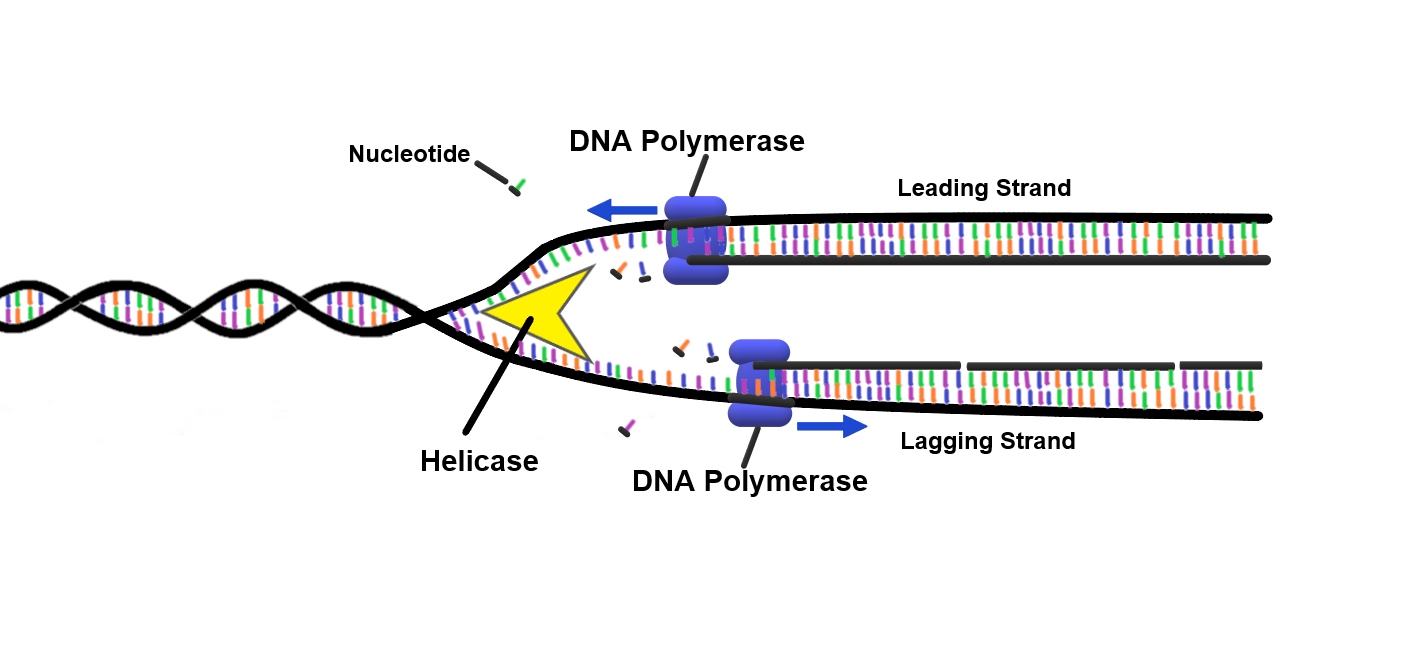
Answer
360k+ views
Hint: During cell division, DNA replication is the process by which DNA duplicates itself. A replication 'fork' is formed when two single strands of DNA are separated, forming a 'Y' shape. The two split strands will serve as templates for the creation of new DNA strands.
Complete answer:
DNA serves as a blueprint for constructing and functioning a cell.
Existing cells divide to make new cells, therefore DNA replication is required.
To function effectively, each cell needs a complete instruction manual. So, before cell division, the DNA must be replicated to ensure that each new cell receives a complete set of instructions.

Fig: Replication fork
Basically, as a cell divides, several enzymes work to split each DNA strand in half and then replace the missing half with equivalent nucleotides, resulting in two identical strands. When a cell's genome (together with all of its organelles) is copied in its entirety, the cell can split into two daughter cells.
DNA replicates itself in order to reproduce.
Because every time a cell splits, the two new daughter cells must have the same genetic information, or DNA, as the parent cell, replication is required. Once a cell's DNA has been copied, it can divide into two cells, each with an exact copy of the original DNA.
Note:
The purpose of replication is to create a second double strand that is identical to the first. The initial step in DNA replication is to separate the two strands of the dsDNA molecule, which serves as a template for a new DNA strand. A DNA helicase is responsible for this.
Complete answer:
DNA serves as a blueprint for constructing and functioning a cell.
Existing cells divide to make new cells, therefore DNA replication is required.
To function effectively, each cell needs a complete instruction manual. So, before cell division, the DNA must be replicated to ensure that each new cell receives a complete set of instructions.

Fig: Replication fork
Basically, as a cell divides, several enzymes work to split each DNA strand in half and then replace the missing half with equivalent nucleotides, resulting in two identical strands. When a cell's genome (together with all of its organelles) is copied in its entirety, the cell can split into two daughter cells.
DNA replicates itself in order to reproduce.
Because every time a cell splits, the two new daughter cells must have the same genetic information, or DNA, as the parent cell, replication is required. Once a cell's DNA has been copied, it can divide into two cells, each with an exact copy of the original DNA.
Note:
The purpose of replication is to create a second double strand that is identical to the first. The initial step in DNA replication is to separate the two strands of the dsDNA molecule, which serves as a template for a new DNA strand. A DNA helicase is responsible for this.
Recently Updated Pages
How is abiogenesis theory disproved experimentally class 12 biology CBSE

What is Biological Magnification

Which of the following reagents cannot distinguish class 12 chemistry CBSE

Which of the following reagents cannot distinguish class 12 chemistry CBSE

Which of the following reagents cannot distinguish class 12 chemistry CBSE

Which of the following reagents cannot distinguish class 12 chemistry CBSE

Trending doubts
Which are the Top 10 Largest Countries of the World?

What is the definite integral of zero a constant b class 12 maths CBSE

Differentiate between homogeneous and heterogeneous class 12 chemistry CBSE

What are the major means of transport Explain each class 12 social science CBSE

Explain sex determination in humans with the help of class 12 biology CBSE

How much time does it take to bleed after eating p class 12 biology CBSE




